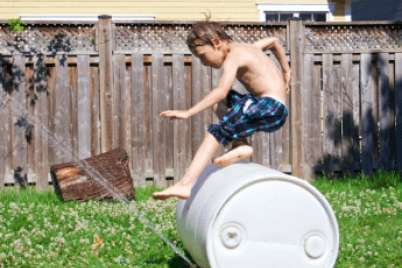
Active play by design: The coolest kindergarten ever
Children today don’t get enough active play time. And that’s a health issue because it’s during active free play that children fill up on their daily requirement of daily physical activity.
The problem is not that children have stopped playing, but that the nature of the games they play has changed. In this digital era we call the “Screen Age,” the playground has moved from the real world to the virtual world.
Until a few decades ago, the playground was outdoors. “Go play outside” was the parental command the majority of kids grew up with. And outside, kids found themselves in a physical and cultural environment that sparked their imagination to play physically active games. They ran, they climbed, they threw, and they kicked. But no more. Today, the playground and its social connections are served on handheld screen devices that are addictive by design.
This is why one of our goals at Active for Life (AfL) is to re-popularize physically active children’s play. We take many routes to convince parents of how critical physically active play time is for children: by publishing articles that explain the health benefits of active play, by sharing the opinion of specialists around the world, and by providing hundreds of active games to make it easy to start playing.
But right now, I want to bring you back to the essence of child’s play through one of my favourite TED talks: Architect Takaharu Tezuka’s presentation of the Fuji Kindergarten in Tokyo, an award-winning structure he designed that has been nicknamed “the coolest kindergarten in the world.”
What does architecture have to do with child’s play? In this case, everything. The genius of Tezuka’s design is that he understands what gets kids to play and he then incorporates these elements in his architecture. With understated humour, Tezuka shares with us the “secrets” of how to get kids to play, move, and laugh.
Towards the end of his presentation (it’s only 10 minutes long), Tezuka shows how the design of the building actually affects the children’s level of physical literacy. As a result, children who attend the Fuji Kindergarten have the highest athletic ability among kindergarten-age children in Tokyo.
“We don’t train them. We let them out and they keep running,” says the principal of the kindergarten, explaining the young students’ high level of physical abilities.
“My point is don’t control them. Don’t protect them too much. And they need to tumble sometimes. They need to get some injuries. And that makes them learn how to live in this world.”
-Architect Takaharu Tezuka on child’s play
You can watch this video to learn how architecture can affect kids’ behaviour, which is in itself fascinating. Or you can watch as a parent and be reminded how kids play and what makes them happy. Either way, Tezuka will charm you with the simple brilliance of his understanding of the nature of child’s play, and by extension, the true nature of what it means to be a child.
Photo courtesy of Tezuka Architects.





